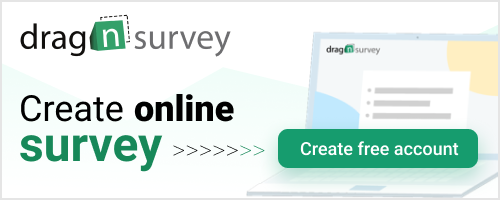While writing a survey, you need to ensure that the questions you’re asking are offering value to the data you’ve collected. This means that you’ve got to create survey queries that are meaningful. However, what are meaningful questions and how can you develop them?
>> Create your Online Survey with Drag’n Survey, click here

What Is Meant By Meaningful Survey Questions?
Meaningful survey questions are designed to extract information that has a specific value to the purpose of your survey. For instance, if you’re looking for what customers think about their experience in-store, you don’t want to be asking them about delivery of online orders.
In addition, meaningful is something that can be used to define a direction. So, a query like “do you shop with us” doesn’t highlight your results. It is information that you either already know, because you’ve contacted past customers, or information that doesn’t really help because it isn’t specific. For instance, have they shopped with you once or every week for the past five years?
Therefore, meaningful questions are either very specific or allow for lots of information to be communicated in open-ended fashion.
So How Do You Write Meaningful Survey Questions?
There are many ways that you can create meaningful questions. Here are our tips to help you out.
1. Trying Getting Specific Answers
One of the worst mistakes that can be made while writing questions is that you aren’t asking for specific information. For instance, in a previous example the query was whether they had shopped with your brand. A simple yes or no might give you that information, but it offers little value. Instead, you should give options like once a year, once a month, once a fortnight, weekly. This will give you more information.
Sometimes however, you might want an open-ended structure. For these, you need to be specific with your wording. For instance, you can’t ask your audience how they like the packaging, because that can refer to anything about the packaging.
Instead, you’ve got to be more specific, such as:
- – Did they like the size of the packaging?
- – Did they like the coloring of the packaging?
- – Did they think the packaging gave enough information about the product?
These questions are specific; and are therefore giving meaningful information for your later analysis.
2. Remove Jargon
Let’s face it, not everyone speaks the same language. And this is true of customers and staff too. Jargon has no place in a survey because it can be confusing, even for those in your office. If you are confusing your audience with unnecessary technical terminology, you’re going to get answers of a lower quality.
Therefore, always keep your questions as simple as possible. You can use the Flesch reading ease to assess whether or not you have sentences that are easy for your audience to read. The Flesch reading ease uses the length of your sentences (via the word count) combined with the average number of syllables per word to calculate how easy a text is to read. Those with a lower score are harder to read.
You should always aim for a score of between 60 to 70 because it is considered suitable for someone with the reading skill of a 13-15 year old.
3. Remind Audiences Of Emotions
Meaningful data comes from impassioned results. Emotion is vital for a true reflection of your audience’s opinion. Therefore, you have to try to get your audience to remember how they were feeling when they interacted with your audience. This can sometimes mean that you have to conjure up that memory so they can remember their feelings/emotions of that moment.
This can be done with a simple jog of the memory like “think back to the last time you spoke to a customer service agent.” However, sometimes you might need to go a little more in-depth and really try hard to get the audience to remember.
4. Test All Questions Against Objectives Of The Survey
Another development point is to test out the questions against the objectives of the survey. Does each query relate to the final outcome you’re looking for? If you don’t think it will help to answer the question, then you should remove it from the survey.
For instance, if you’ve got a survey looking for information about delivery times and you ask a question like: “How easy was it to make a payment on the website?” you can remove it because payment online has nothing to do with getting your product to the customers.
This helps you to reduce the length of the survey, the amount of data you have to analyze at the end and improves the opinion of audiences.
Conclusion
Meaningful questions are those where the answers will offer value to your end-goals for your survey. There are numerous ways you can achieve this, but at the end of the day it is about how you write those queries and deploy them. Use the tips above to help.
More about surveys:
Make Better Decisions With Better Data, click here
The Pinnacle of Online Quiz Software Choices, click here
Entrepreneurial Best Practices For Using Surveys, click here
The Problem With Ambiguous Survey Questions, click here
How to Close Out A Survey – Don’t Write This Question, click here
How To Ask Survey Questions To Benefit As An Entrepreneur, click here
